Vitalik Buterin
description: a Russian-Canadian programmer and writer best known for co-founding Ethereum
41 results
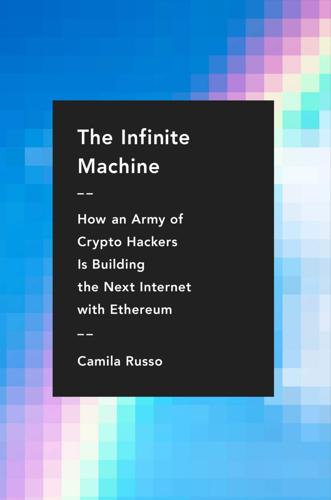
The Infinite Machine: How an Army of Crypto-Hackers Is Building the Next Internet With Ethereum
by
Camila Russo
Published 13 Jul 2020
“blockchain,” Bitfinex tweeted: Bitfinex (@bitfinex), “We are suspending all ETH withdrawal until the network backlog subsides and we are able to reliably post transactions to blockchain,” Twitter, June 21, 2017, https://twitter.com/bitfinex/status/877539782678786051. 26: The Friendly Ghost 1. “religion: crypto”: Vitalik Buterin, “About Me,” personal website, https://about.me/vitalik_buterin. 2. most economic power: Vitalik Buterin, “Slasher: A Punitive Proof-of-Stake Algorithm,” Ethereum Foundation Blog, January 15, 2014, https://blog.ethereum.org/2014/01/15/slasher-a-punitive-proof-of-stake-algorithm/. 27: The Boom 1. coins were surging: Nathaniel Popper, “Move Over, Bitcoin.
…
,” TechCrunch, June 7, 2017, https://techcrunch.com/2017/06/07/what-the-hell-is-happening-to-cryptocurrency-valuations/. 5. said in a July 25 statement: US Securities and Exchange Commission, “Report of Investigation Pursuant to Section 21(a) of the Securities Exchange Act of 1934: The DAO,” news release no. 81207, July 25, 2017, https://www.sec.gov/litigation/investreport/34-81207.pdf. 6. of the Filecoin ICO: Stan Higgins, “$257 Million: Filecoin Breaks All-Time Record for ICO Funding,” CoinDesk, September 7, 2017, updated September 8, 2017, https://www.coindesk.com/257-million-filecoin-breaks-time-record-ico-funding. 28: Futures and Cats 1. first half of 2018: Hugh Son, Dakin Campbell, and Sonali Basak, “Goldman Is Setting Up a Cryptocurrency Trading Desk,” Bloomberg News, December 21, 2017, https://www.bloomberg.com/news/articles/2017-12-21/goldman-is-said-to-be-building-a-cryptocurrency-trading-desk. 2. algorithmic trading: “Cryptocurrency Investment Fund Industry Graphs and Charts,” Crypto Fund Research, https://cryptofundresearch.com/cryptocurrency-funds-overview-infographic/. 3. million, at the peak: Vitalik Buterin’s Ethereum address, Etherscan, https://etherscan.io/address/0xab5801a7d398351b8be11c439e05c5b3259aec9b#analytics. 29: The Crash 1. selling digital assets: “SEC Cyber Enforcement Actions,” US Securities and Exchange Commission, https://www.sec.gov/spotlight/cybersecurity-enforcement-actions. 2. to manipulate crypto markets: “Tether Response to Flawed Paper by Griffin and Shams,” Tether, November 7, 2019, https://tether.to/tether-response-to-flawed-paper-by-griffin-and-shams/. 3. as much as 95 percent: “Market Surveillance Report—August 2018,” Blockchain Transparency Institute, https://www.bti.live/report-august2018/. 4. were Christmas cards: Matt Robinson, “SEC Issues Subpoenas in Hunt for Fraudulent ICOs,” Bloomberg News, February 28, 2018, updated March 1, 2018, https://www.bloomberg.com/news/articles/2018-03-01/sec-is-said-to-issue-subpoenas-in-hunt-for-fraudulent-icos. 5. groundbreaking technology: Camila Russo, “Bitcoin Speculators, Not Drug Dealers, Dominate Crypto Use Now,” Bloomberg News, August 7, 2018, https://www.bloomberg.com/news/articles/2018-08-07/bitcoin-speculators-not-drug-dealers-dominate-crypto-use-now. 6. forcing it back to earth: “ICO Treasury Balances,” Diar, https://diar.co/ethereum-ico-treasury-balances/. 7. cases were dropped: Joseph Menn, “Bitcoin Foundation Hit by Resignations over New Director,” Reuters, May 16, 2014, https://www.reuters.com/article/us-bitcoin-foundation-resignations/bitcoin-foundation-hit-by-resignations-over-new-director-idUSBREA4F02B20140516. 30: The Party 1. and clapped along: CoinDesk, “Devcon 4—Ethereum’s Big Sing-a-long,” YouTube, uploaded October 31, 2018, https://www.youtube.com/watch?v=xC8DrG5KSLU. 2. liked responses: Vitalik Buterin (@VitalikButerin), “Just sent 1000 eth. Yolo,” Twitter, December 18, 2018, https://twitter.com/VitalikButerin/status/1075181710730506240. 3. “And, like . . . no”: Fred Wilson, “Video of the Week: Vitalik Buterin—The Unchained Podcast Interview,” AVC (blog), March 30, 2019, https://avc.com/2019/03/video-of-the-week-vitalik-buterin-the-unchained-podcast-interview/. 4. a credit card: Cash Essentials, World Cash Report 2018, https://cashessentials.org/app/uploads/2018/07/2018-world-cash-report.pdf. 5. banking without banks: Delphi Digital, Thematic Insights: Decentralized Finance, March 2019, https://www.delphidigital.io/defi.
…
“ongoing chain of hash-based proof-of-work”: Satoshi Nakamoto, “Bitcoin P2P E-cash Paper,” Cryptography Mailing List, October 31, 2008, https://satoshi.nakamotoinstitute.org/emails/cryptography/1/#selection-75.18-83.27.18. 4. Satoshi Nakamoto wrote in the paper: Satoshi Nakamoto, “Bitcoin: A Peer-to-Peer Electronic Cash System,” 2008, https://bitcoin.org/bitcoin.pdf. 5. “Bitcoin offers a way to fix this”: Vitalik Buterin, reply to “Bitcoin Weekly Looking for Writers,” BitcoinTalk, March 25, 2011, https://bitcointalk.org/index.php?topic=4916.msg72174#msg72174. 3: The Magazine 1. “suddenly crash at any time”: Vitalik Buterin, “Causes Behind the Bitcoin Price Rally,” Bitcoin Weekly, May 15, 2011, https://web.archive.org/web/20130916232908/http://bitcoinweekly.com:80/articles/causes-behind-the-Bitcoin-price-rally. 2.
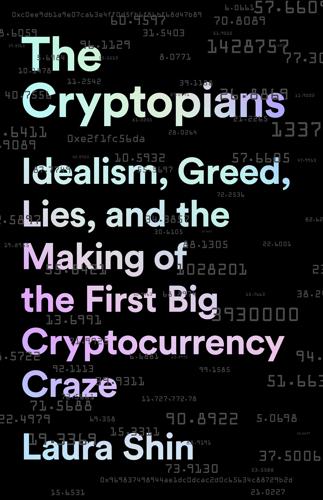
The Cryptopians: Idealism, Greed, Lies, and the Making of the First Big Cryptocurrency Craze
by
Laura Shin
Published 22 Feb 2022
Stephan Tual (@Ursium), “No, it’s not…,” August 16, 2015, comment on “Early Contributor Distribution,” Reddit, August 16, 2015, https://www.reddit.com/r/ethereum/comments/3h7oel/early_contributor_distribution/cu59240. 5. Vitalik Buterin (@vbuterin), “Okay, let me elaborate…,” August 17, 2015, comment on “Early Contributor Distribution.” 6. Stephan Tual (@Ursium), “So for the interest of clarity here…,” August 17, 2015, comment on “Early Contributor Distribution.” 7. Vitalik Buterin (@vbuterin), “The ‘I don’t remember…,’” August 17, 2015, comment on “Early Contributor Distribution.” 8. Vitalik Buterin (@vbuterin), “Also, it’s worth noting that…,” August 20, 2015, comment on “Early Contributor Distribution.” 9.
…
topic=20235.msg253364#msg253364. 6. Adrian Chen, “The Underground Website Where You Can Buy Any Drug Imaginable,” Gawker, June 1, 2011, https://gawker.com/the-underground-website-where-you-can-buy-any-drug-imag-30818160. 7. Vitalik Buterin, “Bitcoin and the Goldbugs,” Bitcoin Weekly via Wayback Machine, June 12, 2011, https://web.archive.org/web/20110617050611/http://bitcoinweekly.com/articles/bitcoin-and-the-goldbugs. 8. Vitalik Buterin, “Social Democracy Enforced in Currency,” Bitcoin Weekly via Wayback Machine, August 15, 2011, https://web.archive.org/web/20110828021149/http://bitcoinweekly.com/articles/social-democracy-enforced-in-currency. 9.
…
Mihai graduated with a degree in cybernetics and economy informatics. 11. Matthew N. Wright, “Pre-order Bitcoin Magazine—Quality Control, Final Revisions on Proofs,” BitcoinTalk, January 25, 2012, https://bitcointalk.org/index.php?topic=61017.msg711286#msg711286. 12. Vitalik Buterin, “Introduction to Bitcoin Terminology Part II,” Bitcoin Magazine, March 3, 2012, https://bitcoinmagazine.com/articles/introduction-to-bitcoin-terminology-part-ii-1330796614. 13. Vitalik Buterin, “Common Misconceptions About Bitcoin—a Guide for Journalists,” Bitcoin Magazine, December 29, 2012, https://bitcoinmagazine.com/articles/common-misconceptions-about-bitcoin-a-guide-for-journalists-1356758643.
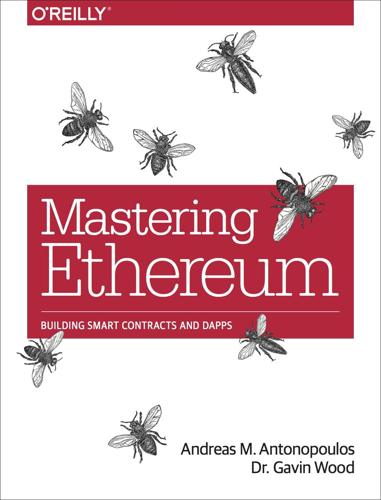
Mastering Ethereum: Building Smart Contracts and DApps
by
Andreas M. Antonopoulos
and
Gavin Wood Ph. D.
Published 23 Dec 2018
Alex Beregszaszi, Nikolai Mushegian Core Final Metropolis Byzantinium EIP-141 Designated invalid EVM instruction Alex Beregszaszi Core Final EIP-145 Bitwise shifting instructions in EVM Alex Beregszaszi, Paweł Bylica Core Deferred EIP-150 Gas cost changes for IO-heavy operations Vitalik Buterin Core Final EIP-155 Simple replay attack protection. Replay Attack allows any transaction using a pre-EIP-155 Ethereum node or client to become signed so it is valid and executed on both the Ethereum and Ethereum Classic chains. Vitalik Buterin Core Final Homestead EIP-158 State clearing Vitalik Buterin Core Superseded EIP-160 EXP cost increase Vitalik Buterin Core Final EIP-161 State trie clearing (invariant-preserving alternative) Gavin Wood Core Final EIP-162 Initial ENS Hash Registrar Maurelian, Nick Johnson, Alex Van de Sande ERC Final EIP-165 ERC-165 Standard Interface Detection Christian Reitwiessner et al.
…
Turing complete A concept named after English mathematician and computer scientist Alan Turing: a system of data-manipulation rules (such as a computer’s instruction set, a programming language, or a cellular automaton) is said to be “Turing complete” or “computationally universal” if it can be used to simulate any Turing machine. Vitalik Buterin A Russian–Canadian programmer and writer primarily known as the cofounder of Ethereum and of Bitcoin Magazine. Vyper A high-level programming language, similar to Serpent, with Python-like syntax. Intended to get closer to a pure functional language. Created by Vitalik Buterin. Wallet Software that holds secret keys. Used to access and control Ethereum accounts and interact with smart contracts. Keys need not be stored in a wallet, and can instead be retrieved from offline storage (e.g., a memory card or paper) for improved security.
…
Important EIPs and ERCs EIP/ERC # Title/Description Author Layer Status Created EIP-1 EIP Purpose and Guidelines Martin Becze, Hudson Jameson Meta Final EIP-2 Homestead Hard-fork Changes Vitalik Buterin Core Final EIP-5 Gas Usage for RETURN and CALL* Christian Reitwiessner Core Draft EIP-6 Renaming SUICIDE Opcode Hudson Jameson Interface Final EIP-7 DELEGATECALL Vitalik Buterin Core Final EIP-8 devp2p Forward Compatibility Requirements for Homestead Felix Lange Networking Final EIP-20 ERC-20 Token Standard. Describes standard functions a token contract may implement to allow DApps and wallets to handle tokens across multiple interfaces/DApps.
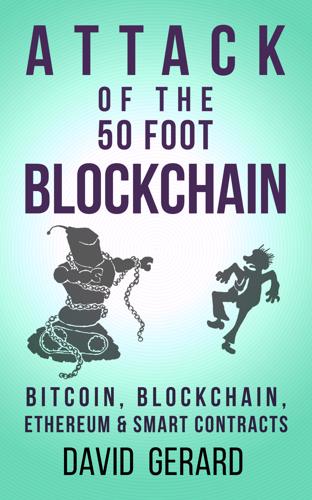
Attack of the 50 Foot Blockchain: Bitcoin, Blockchain, Ethereum & Smart Contracts
by
David Gerard
Published 23 Jul 2017
Industry consortia, standards groups and so on are well-tested models. Blockchains do not offer a better way to do this. An August 2015 blog post from Vitalik Buterin discusses “public”, “consortium” and “private” blockchains. Bitcoin and Ethereum are “public” blockchains.377 This comment chain on the post concisely summarises the innovations the private blockchain brings: Andrey Zamovskiy: Let’s just admit that blockchain is simply a new type of replication algorithm for a database cluster. That’s it. Vitalik Buterin: Correct. Plus Merkle trees. The Merkle trees are actually important. Andrey Zamovskiy: Merkle trees have not been invented with bitcoin, they’ve just got an adoption.
…
You could also trade the RRTs on the exchange.265 Convoluted arrangements like this are part of why bankruptcy laws, let alone financial trading regulations, exist: so that creditors and depositors get paid first and fairly in a clear and open manner. In the meantime, Bitfinex promised a financial and security audit. Not by any such tawdry profession as actual accountants; they were going to use “Ledger Labs Inc., a top blockchain forensics and technology firm,” which happens to be run by Vitalik Buterin, creator of Ethereum (of which more later).266 They later admitted this audit had never happened.267 Bitfinex then posted an open letter to the hacker, seeking “a mutually agreeable arrangement in exchange for an enormous bug bounty”, i.e., if only they would explain how they’d hacked Bitfinex: “Our interest here is not to accuse, blame or make demands, but rather to discuss an arrangement that we think you will find interesting.”268 It was entirely unclear to any observer what possible arrangement could be more interesting to the thief than “I have all your bitcoins now.”
…
– the community sponsored sending a physical Dogecoin on an Astrobotic commercial moon shot.293 It came out in May 2017 that the operator of the Dogecoin tipping bot on Reddit had stolen all the deposited Dogecoins two years earlier.294 Much sorry, many loss. Ethereum Ethereum was proposed by Vitalik Buterin (an early Bitcoiner and a co-founder of Bitcoin Magazine) and developed by Buterin, Gavin Wood, Jeffrey Wilcke and others. Its key innovation is that you can run smart contracts on a blockchain: programs that are triggered to run automatically in a given circumstance. If Bitcoin is like an Excel spreadsheet, then Ethereum is like a spreadsheet with macros.

Blockchain Revolution: How the Technology Behind Bitcoin Is Changing Money, Business, and the World
by
Don Tapscott
and
Alex Tapscott
Published 9 May 2016
But unlike bitcoin it contains some powerful tools to help developers and others create software services ranging from decentralized games to stock exchanges. Ethereum was conceived in 2013 by then-nineteen-year-old Vitalik Buterin, a Canadian of Russian descent. He had argued to the bitcoin core developers that the platform needed a more robust scripting language for developing applications. When they rejected him, he decided to craft his own platform. ConsenSys was first off the block, so to speak, launched to create Ethereum-based apps. Flash-forward a couple of years and the analogy is clear: Linus Torvalds is to Linux what Vitalik Buterin is to Ethereum. When discussing the rise of blockchain and Ethereum technology, Joseph Lubin, ConsenSys’s cofounder, said, “It became clear to me that instead of people wasting their time walking down the street with posters on sticks, we could all work together to just build the new solutions to this broken economy and society.”1 Don’t occupy Wall Street.
…
Stephan Tual, “Announcing the New Foundation Board and Executive Director,” Ethereum blog, Ethereum Foundation, July 30, 2015; https://blog.ethereum.org/2015/07/30/announcing-new-foundation-board-executive-director/, accessed December 1, 2015. 2. Ethereum: The World Computer, produced by Ethereum, YouTube, July 30, 2015; www.youtube.com/watch?v=j23HnORQXvs, accessed December 1, 2015. 3. Interview with Vitalik Buterin, September 30, 2015. 4. Ibid. 5. Ibid. 6. Ibid. 7. Henry VI, part 2, act 4, scene 2. 8. E-mail correspondence with Vitalik Buterin, October 1, 2015. 9. David D. Clark, “A Cloudy Crystal Ball,” presentation, IETF, July 16, 1992; http://groups.csail.mit.edu/ana/People/DDC/future_ietf_92.pdf. 10. Interview with Brian Forde, June 26, 2015. 11.
…
In alphabetical order: Jeremy Allaire, Founder, Chairman, and CEO, Circle Marc Andreessen, Cofounder, Andreessen Horowitz Gavin Andresen, Chief Scientist, Bitcoin Foundation Dino Angaritis, CEO, Smartwallet Andreas Antonopoulos, Author, Mastering Bitcoin Federico Ast, CrowdJury Susan Athey, Economics of Technology Professor, Stanford Graduate School of Business Adam Back, Cofounder and President, Blockstream Bill Barhydt, CEO, Abra Christopher Bavitz, Managing Director, Cyberlaw Clinic, Harvard Law School Geoff Beattie, Chairman, Relay Ventures Steve Beauregard, CEO and Founder, GoCoin Mariano Belinky, Managing Partner, Santander InnoVentures Yochai Benkler, Berkman Professor of Entrepreneurial Studies, Harvard Law School Jake Benson, CEO and Founder, LibraTax Tim Berners-Lee, Inventor, World Wide Web Doug Black, Senator, Canadian Senate, Government of Canada Perriane Boring, Founder and President, Chamber of Digital Commerce David Bray, 2015 Eisenhower Fellow and Harvard Visiting Executive in Residence Jerry Brito, Executive Director, Coin Center Paul Brody, Americas Strategy Leader, Technology Group, EY (formerly IoT at IBM) Richard G. Brown, CTO, R3 CEV (former Executive Architect for Industry Innovation and Business Development, IBM) Vitalik Buterin, Founder, Ethereum Patrick Byrne, CEO, Overstock Bruce Cahan, Visiting Scholar, Stanford Engineering; Stanford Sustainable Banking Initiative James Carlyle, Chief Engineer, MD, R3 CEV Nicolas Cary, Cofounder, Blockchain Ltd. Toni Lane Casserly, CEO, CoinTelegraph Christian Catalini, Assistant Professor, MIT Sloan School of Management Ann Cavoukian, Executive Director, Privacy and Big Data Institute, Ryerson University Vint Cerf, Co-creator of the Internet and Chief Internet Evangelist, Google Ben Chan, Senior Software Engineer, BitGo Robin Chase, Cofounder and Former CEO, Zipcar Fadi Chehadi, CEO, ICANN Constance Choi, Principal, Seven Advisory John H.

Life After Google: The Fall of Big Data and the Rise of the Blockchain Economy
by
George Gilder
Published 16 Jul 2018
“In 2012, I entered the University of Waterloo; in 2013 I realized that crypto projects were taking up 30h/week of my time, so I dropped out. I went around the world, explored many crypto projects, and finally realized that they were all too concerned about specific applications and not being sufficiently general—hence the birth of Ethereum, which has been taking up my life ever since. . . . ” Vitalik Buterin, https://about.me/vitalik_buterin. 3. 1517 Fund website, About, http://www.1517fund.com/thesis/. 4. Pony Tracks “weaponry;” Bruce Newman, “Tanks for the Memories: Historic Collection of Military Might Auctioned for More Than $10 Million” Mercury News, July 13, 2014, https://www.mercurynews.com/2014/07/13/tanks-for-the-memories-historic-collection-of-military-might-auctioned-for-more-than-10-million/.
…
Reflecting on the 1975 conference, the eminent chemist-biologist Michael Denton concludes, “The actual achievements of genetic engineering are rather more mundane . . . , a relatively trivial tinkering rather than genuine engineering, analogous to tuning a car engine rather than redesigning it, an exploitation of the already existing potential for variation which is built into all living systems. . . . ” Thousands of transgenic plants have been developed with results “far from the creation or radical reconstruction of a living organism.”14 All that the first Asilomar conference managed to achieve was triggering an obtuse paranoia about “genetically modified organisms” that hinders agricultural progress around the world. That danger of paranoid politics is the chief peril that all the Deep Learners at the new Asilomar should have recognized. Among the Deep Learners and Google brains at the AI Asilomar was Vitalik Buterin, a twenty-three-year-old college dropout with the same etiolated, wide-eared, boy-genius look that characterized Gödel and Turing. The assembled masters of the high-tech universe may have understood him about as well as the mathematicians in Königsberg understood the twenty-four-year-old Gödel in 1930, though the audience at Asilomar had advance notice of the significance of Buterin’s work.
…
She already believed that many students could learn far more starting their own companies than sitting in classrooms. When she heard about the Thiel Fellowship, originally called “20 under 20,” she joined Gibson there. They picked their first group of twenty under twenty in 2011. The next year an eighteen-year-old freshman at Canada’s University of Waterloo, Vitalik Buterin, applied. The Thiel team found Buterin’s project, an innovation in digital education, unimpressive. “At the outset,” says Strachman, “we were seeing lots of education projects; his didn’t stand out.” They passed him over, and he didn’t reapply. But that year they did choose his high school classmate and friend Chris Olah, a nineteen-year-old graphics virtuoso.
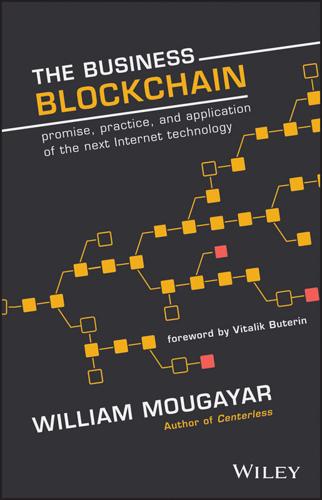
The Business Blockchain: Promise, Practice, and Application of the Next Internet Technology
by
William Mougayar
Published 25 Apr 2016
THE BUSINESS BLOCKCHAIN Promise, Practice, and Application of the Next Internet Technology WILLIAM MOUGAYAR FOREWORD BY VITALIK BUTERIN Cover and book design: THE FRONTISPIECE Copyright © 2016 by William Mougayar. All rights reserved. Published by John Wiley & Sons, Inc., Hoboken, New Jersey. Published simultaneously in Canada. No part of this publication may be reproduced, stored in a retrieval system, or transmitted in any form or by any means, electronic, mechanical, photocopying, recording, scanning, or otherwise, except as permitted under Section 107 or 108 of the 1976 United States Copyright Act, without either the prior written permission of the Publisher, or authorization through payment of the appropriate per-copy fee to the Copyright Clearance Center, Inc., 222 Rosewood Drive, Danvers, MA 01923, (978) 750-8400, fax (978) 646-8600, or on the Web at www.copyright.com.
…
It is a truism of entrepreneurship generally that 90% of all new businesses fail. But the 10% that succeed will likely at some point be scaled up into full-on products that reach millions of people—and that's where the fun really begins. Perhaps William's book will inspire you to understand and, perhaps, join in refining the business blockchain. Vitalik Buterin Ethereum inventor and Chief Scientist, Ethereum Foundation APRIL 2, 2016 ACKNOWLEDGMENTS SOME SAY WRITING A BOOK is a labor of love, and they are right. For me, it felt like assembling a puzzle on a canvas, then framing it. Book writing is like an act of gift exchanging. The author spends an enormous amount of time to organize and concentrate their thoughts in writing.
…
Sometimes, a relationship develops between the author and readers. In my case, I welcome any reader who wishes to email me at wmougayar@gmail.com. The moment I became involved in the blockchain industry, several people contributed to the shaping of my thinking and insights, but no single person had more influence on my education than Vitalik Buterin, creator and Chief Scientist at Ethereum. I am forever indebted to his time and knowledge, which he shared generously. To all the creators, innovators, pioneers, leaders, entrepreneurs, startups, enterprise executives and practitioners who are living at the leading edges of this technological revolution, thank you for helping me connect the dots.
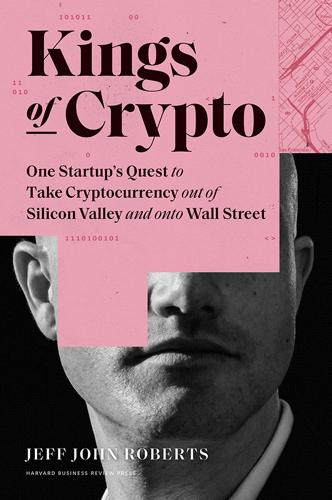
Kings of Crypto: One Startup's Quest to Take Cryptocurrency Out of Silicon Valley and Onto Wall Street
by
Jeff John Roberts
Published 15 Dec 2020
Craig and others thought he looked like a cross between a drug dealer and a street person with his torn Nikes and stained sweatpants, but they became transfixed. Balaji may have looked like a hobo but he sounded like an Ivy League professor, delivering an impromptu lecture on the work of political economist Albert Hirschman. A scrawny teenager named Vitalik Buterin, who would soon invent the most important cryptocurrency after bitcoin, also spent days puttering around the Coinbase office. Not all visitors to Bluxome Street were so welcome. On several occasions, irate Coinbase customers appeared at the door, demanding explanations for whatever glitch had befallen their account.
…
And while the big-blockers and small-blockers of bitcoin traded death threats and invective during 2015, a sunny and unified community of Ethereum backers would share the new currency with the public. Ethereum also enjoyed a special advantage over bitcoin. It had an acknowledged leader in the form of its wunderkind creator who would become the most famous figure in cryptocurrency after Satoshi. PART TWO * * * From Boom to Bubble to Bust 7 Enter Ethereum Vitalik Buterin is soft-spoken, pale, and practically skeletal. He likes to wear “My Little Pony”–style T-shirts. A child of Russian émigrés, he grew up in the Toronto suburbs and, even as a tiny boy, knew he was different from other children. Infatuated with numbers, Vitalik had a favorite toy as a small child: it was called Microsoft Excel.
…
Meanwhile, the thriving world of crypto investors was not going to wait for the feds. As Congress dithered, one of the most outrageous financial bubbles in modern history was swelling faster than a new celebrity’s ego. 11 Initial Coin Insanity On June 25, 2017, news raced around social media that Ethereum creator Vitalik Buterin had died in a car crash. Speculators panicked. Prices fell 20 percent, lopping $4 billion off Ethereum’s value in hours. The next day, a tweet from Vitalik himself went viral. The tweet showed a photo of him, very much alive, holding up a piece of paper with the number of a newly mined block in the Ethereum blockchain and a figure, known as a hash, that had just unlocked the block.

Cryptoassets: The Innovative Investor's Guide to Bitcoin and Beyond: The Innovative Investor's Guide to Bitcoin and Beyond
by
Chris Burniske
and
Jack Tatar
Published 19 Oct 2017
Instead, 100 billion units of XRP were created and initially held by Ripple Labs (at that time, OpenCoin). While there was, and still is, intent to distribute all this XRP to seed use, as of writing the majority of XRP is still under the control of Ripple Labs. This has led to mistrust of the Ripple protocol from much of the cryptocurrency community. Vitalik Buterin, who would later go on to create Ethereum, wrote in February 2013 for Bitcoin Magazine: “Because of the monetary distribution, OpenCoin may well face an uphill battle convincing the community that they can be trusted.”26 Pricing services like CoinCap don’t list XRP’s total available supply as the 100 billion that Ripple lists27 but only include the ripple that has thus far been distributed to the public, which is just north of 37 billion units.28 A word to the wise for the innovative investor: with a new cryptocurrency, it’s always important to understand how it’s being distributed and to whom (we’ll discuss this further in Chapter 12).
…
These conditions can become much more complex, creating conditional waterfalls depending on the process being programmed and the variables that need to be met. While Szabo had the early vision for smart contracts, the Ethereum team would be the first to create a mainstream and attention-grabbing platform to execute smart contracts in a decentralized manner. At the core of the team is Vitalik Buterin, who many regard as Ethereum’s Satoshi. Buterin was born in Russia but grew up in Canada. He had the good fortune of a freethinking father,2 who in February 2011 introduced 17-year-old Buterin to Satoshi’s work and Bitcoin.3 Bitcoin had only been functioning for two years at that point, and no major alternative was in existence.
…
If holders fail to report accurately on the outcome of an event, or attempt to be dishonest—the Augur system redistributes the bad reporter’s Reputation to those who have reported accurately during the same reporting cycle.35 Augur conducted its own crowdfunding effort in 2015, selling 80 percent of a fixed supply of 11 million REP. In so doing, it raised over $5 million to fund the creation of the platform. Brian Armstrong, CEO of Coinbase, which is one of the largest companies in the cryptoasset sector, has called it an “awesome project with huge potential.”36 Even Vitalik Buterin acknowledged its potential when he called it an “Uber for knowledge.”37 Augur is one of the clearest uses of cryptotokens, and its potential success could set the stage for even more implementations of crypotokens in the future. A similar prediction market system, Gnosis, held a crowdsale in April 2017 raising money at an implied valuation north of $300 million.

On the Edge: The Art of Risking Everything
by
Nate Silver
Published 12 Aug 2024
GO TO NOTE REFERENCE IN TEXT “fully fledged Turing-complete”: Vitalik Buterin, “Ethereum: A Next-Generation Smart Contract and Decentralized Application Platform,” 2014, https://blockchainlab.com/pdf/Ethereum_white_paper-a_next_generation_smart_contract_and_decentralized_application_platform-vitalik-buterin.pdf. GO TO NOTE REFERENCE IN TEXT an award-winning programmer: “IOI 2012: Results,” International Olympiad in Informatics Statistics, stats.ioinformatics.org/results/2012. GO TO NOTE REFERENCE IN TEXT was just nineteen: Michael Adams and Benjamin Curry, “Who Is Vitalik Buterin?,” Forbes Advisor, April 20, 2023, forbes.com/advisor/investing/cryptocurrency/who-is-vitalik-buterin.
…
,” Forbes Advisor, April 20, 2023, forbes.com/advisor/investing/cryptocurrency/who-is-vitalik-buterin. GO TO NOTE REFERENCE IN TEXT capitalization of gold: “Market Capitalization of Gold and Bitcoin Chart,” In Gold We Trust, December 9, 2021, ingoldwetrust.report/chart-gold-bitcoin-marketcap/?lang=en. GO TO NOTE REFERENCE IN TEXT to drop out: Pete Rizzo, “$100k Peter Thiel Fellowship Awarded to Ethereum’s Vitalik Buterin,” CoinDesk, June 5, 2014, coindesk.com/markets/2014/06/05/100k-peter-thiel-fellowship-awarded-to-ethereums-vitalik-buterin. GO TO NOTE REFERENCE IN TEXT or decentralized finance: “What Is DeFi?
…
GO TO NOTE REFERENCE IN TEXT 2023 “Techno-Optimist Manifesto”: Marc Andreessen, “The Techno-Optimist Manifesto,” Andreessen Horowitz, October 16, 2023, a16z.com/the-techno-optimist-manifesto. GO TO NOTE REFERENCE IN TEXT “being uniquely careful”: Vitalik Buterin, “My Techno-Optimism,” Vitalik Buterin’s Website (blog), November 27, 2023, vitalik.eth.limo/general/2023/11/27/techno_optimism.html#ai. GO TO NOTE REFERENCE IN TEXT a given fund: Per interview with Marc Andreessen. GO TO NOTE REFERENCE IN TEXT sworn to secrecy: Chamath Palihapitiya et al., “#AIS: FiveThirtyEight’s Nate Silver on How Gamblers Think,” All-In with Chamath, Jason, Sacks & Friedberg, 2022, podcasts.apple.com/ie/podcast/ais-fivethirtyeights-nate-silver-on-how-gamblers-think/id1502871393?

The Mysterious Mr. Nakamoto: A Fifteen-Year Quest to Unmask the Secret Genius Behind Crypto
by
Benjamin Wallace
Published 18 Mar 2025
Why, he asked the crowd, hadn’t bitcoin, which was now worth $813 billion, replaced gold, which was worth $12 trillion? Bitcoin was a warning, he said, that the fiat system was over. He put up a slide that read “BTC vs ETH.” Ether was the second most valuable cryptocurrency. Above the “BTC” was a photograph of a man aiming a machine gun at the camera, while above the “ETH” was a photo of Ethereum founder Vitalik Buterin at his most gawky and wearing purple pants. However technically innovative and superior Bitcoin might be, Thiel said, it was a political movement, and what stood in its way were “the enemies of this movement.” “And so I want to maybe end with an enemies list,” he said, “a list of people who I think are stopping Bitcoin.”
…
But the topic quickly shifted to his endorsement of Wright and to criticism of Wright’s blog post. Gavin explained why he was convinced that Wright was Nakamoto but cautioned the audience that he would “draw the line”—he made a blade of his hand and carved said line in the air—at revealing the content of his discussions with Wright, who wanted “privacy.” Vitalik Buterin, Ethereum’s anti-Satoshi (founder, patron saint, and unofficial leader, with an unapologetically public persona), was sitting next to Gavin on the stage. “Just so there’s a little bit of controversy for fun,” Buterin said, before the moderator could ask another question, “I’ll explain why I think he’s probably not Satoshi.”
…
When he spoke at a Zurich meetup in October and an attendee challenged his credentials, an assistant stepped from the wings pushing a wheelbarrow piled with Wright’s framed certifications and academic degrees. His detractors grew bolder too. When Wright appeared onstage in Seoul in April 2018, Vitalik Buterin stood and asked: “Why is this fraud allowed to speak at this conference?” * * * — By then, it had been revealed that the businessmen who had hand-held Gavin in London, and the PR people who courted journalists for the Wright-is-Satoshi blitzkrieg, were part of a larger, murkier operation.
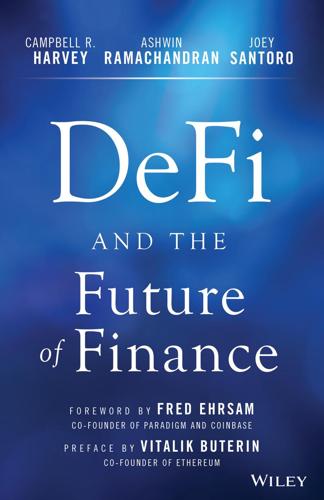
DeFi and the Future of Finance
by
Campbell R. Harvey
,
Ashwin Ramachandran
,
Joey Santoro
,
Vitalik Buterin
and
Fred Ehrsam
Published 23 Aug 2021
In the book DeFi and The Future of Finance, the authors discuss many of the additional improvements DeFi offers over the traditional financial system. The authors also explain the in-depth workings of many of the most important DeFi protocols today, including stablecoins, automated market makers, and more. I recommend this book to anyone interested in learning more about Ethereum and DeFi protocols. Vitalik Buterin Co-founder of Ethereum I INTRODUCTION We have come full circle. The earliest form of market exchange was peer to peer, also known as barter.1 Barter was highly inefficient because supply and demand had to be exactly matched between peers. To solve the matching problem, money was introduced as a medium of exchange and store of value.
…
These new currencies can adjust their parameters such as inflation and mechanism for consensus via their underlying blockchain to create different value propositions. We will discuss blockchain and cryptocurrency in greater depth later on but for now will focus on a particular cryptocurrency with special relevance to DeFi. ETHEREUM AND DeFi Ethereum (ETH) is currently the second largest cryptocurrency by market cap ($260b). Vitalik Buterin introduced the idea in 2014, and Ethereum mined its first block in 2015. Ethereum is in some sense a logical extension of the applications of Bitcoin because it allows for smart contracts – which are code that lives on a blockchain, can control assets and data, and define interactions between the assets, data, and network participants.
…
This capability allows anyone in the world to have access to opportunities that typically require very large amounts of capital investment. In time, we will see similar innovations that could not exist in the world of traditional finance. NOTES 1. Technically, a transaction sent to an EOA can also send data, but the data have no Ethereum-specific functionality. 2. Fabian Fobelsteller and Vitalik Buterin, “EIP-20: ERC-20 Token Standard,” Ethereum Improvement Proposals, no. 20, November 2015 [Online serial], https://eips.ethereum.org/EIPS/eip-20. 3. William Entriken et al., “EIP-721: ERC-721 Non-Fungible Token Standard,” Ethereum Improvement Proposals, no. 721, January 2018 [Online serial], https://eips.ethereum.org/EIPS/eip-721. 4.
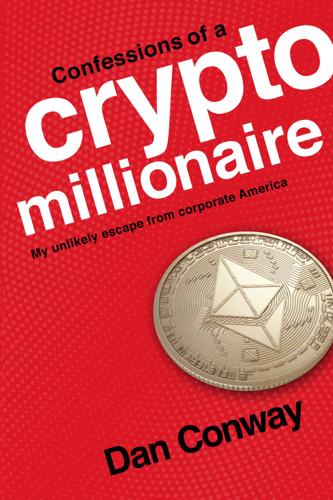
Confessions of a Crypto Millionaire: My Unlikely Escape From Corporate America
by
Dan Conway
Published 8 Sep 2019
My favorites were from DevCon 1, which took place in London in November 2015—the first congregation of the embryonic Ethereum community. The event had a Woodstock feel. By then I knew all about Ethereum’s creator, but these videos were the first time I laid eyes on Vitalik Buterin. This was the person who prompted me to write three Medium blogs, two of which I deleted because they were too fawning, and I’m a grown man. I’m obviously no genius, but I have a curious faith that I can spot one. I believed Vitalik was the real deal. Vitalik Buterin was born in Russia and grew up in Canada from the age of six. His favorite childhood toy was Excel. He learned about Bitcoin from his computer scientist father when he was seventeen and attending the University of Waterloo in Ontario.
…
Which reminds me of what Winston Churchill said about modern government: “Democracy is the worst form of government, except for all of the others.” The same could have been said of the modern firm. Until it wasn’t. While I was struggling to master the corporate world, which had always eluded me, a young genius named Vitalik Buterin was creating Ethereum. More on Vitalik later. Ethereum is a “Turing complete blockchain,” which means it can be programmed to do anything. Whereas Bitcoin has the functionality of a calculator and can transact digital money, Ethereum has the functionality of a computer and is a trustless—thus, supremely trustworthy —platform to transact any type of business.
…
Considering my current struggles at Acme, this would be a perfect opportunity to unburden myself and get some moral support. I started talking, and I wouldn’t shut up. But all I could talk about was ETH. “Listen, I have something big to tell you. I’ve discovered a new digital currency, like bitcoin. It has a cult following in the tech scene, and I think the price is going to explode upwards. This guy Vitalik Buterin who invented it is a genius. He’s only twenty-one, and he was born in Russia. He learned Mandarin in his spare time!” And so on. We have a family friend who—before being institutionalized—started using colors to describe the days. “Today is a red day. That means tomorrow should be orange,” he’d say.
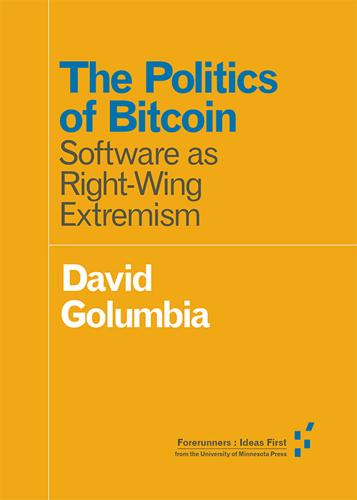
The Politics of Bitcoin: Software as Right-Wing Extremism
by
David Golumbia
Published 25 Sep 2016
Advocates for DAOs, DACs and their offshoots spend a great deal of time, unsurprisingly, on describing the technology that might allow these structures to come into being. But as with Bitcoin itself, it is hard not to see—that is, if one is looking for it—the extremist assumptions on which the notions of DAOs and DACs and their ilk are built. One of the main proponents of DAOs and DACs is Vitalik Buterin, author of the passage about “smart contracts” above, “a Canadian college dropout and Bitcoin enthusiast” (Schneider 2014), cofounder of Bitcoin Magazine, and a recipient of one of the US$100,000 Thiel Fellowships funded by the eponymous right-wing technology entrepreneur and PayPal founder Peter Thiel (Rizzo 2014a)—fellowships that specifically promote the rejection of higher education, in a manner harmonious with the rejection by Thiel and others on the right wing of public goods (Lind 2014).
…
“Central Banks’ Failed Policies Are Strengthening Bitcoin.” Bitcoin.com (January 12). https://news.bitcoin.com/. Richardson, Tim. 2001. “Beenz Denies It’s about to Be Canned: Global ‘Net’ Currency Devalued Big-Time.” The Register (May 16). http://www.theregister.co.uk/. Rizzo, Pete. 2014a. “$100k Peter Thiel Fellowship Awarded to Ethereum’s Vitalik Buterin.” CoinDesk (June 5). http://www.coindesk.com/. —. 2014b. “Tokyo Police Launch Investigation into Missing Mt. Gox Bitcoin.” CoinDesk (July 30). http://www.coindesk.com/. Robinson, Jeffrey. 2014. Bitcon: The Naked Truth about Bitcoin. Seattle: Amazon Digital Services. “Ron Paul Sites Are Obsessed with Jews, Zionists, and Israel.” 2011.
…
A History of Money and Banking in the United States: The Colonial Era to World War II. Edited by Joseph Salerno. Auburn, Ala.: Mises Institute. Sarkar, Debleena. 2015. “Mark Karpeles Faces New Charges in the Bitcoin Scandal.” International Business Times, Australia ed. (August 3). http://www.ibtimes.com.au/. Schneider, Nathan. 2014. “Meet Vitalik Buterin, the 20-Year-Old Who Is Decentralizing Everything.” Shareable (July 31). http://www.shareable.net/. Schroeder, Jeanne L. 2015. “Bitcoin and the Uniform Commercial Code.” Cardozo Legal Studies Research Paper 458. http://papers.ssrn.com/. Scott, Brett. 2014. “Visions of a Techno-Leviathan: The Politics of the Bitcoin Blockchain.”

The Truth Machine: The Blockchain and the Future of Everything
by
Paul Vigna
and
Michael J. Casey
Published 27 Feb 2018
Barry Silbert came up with the SegWit2x compromise: “Bitcoin Scaling Agreement at Consensus 2017,” Digital Currency Group, Medium, May 23, 2017, https://medium.com/@DCGco/bitcoin-scaling-agreement-at-consensus-2017-133521fe9a77. When Buterin released his white paper in December 2013: Vitalik Buterin, “Ethereum White Paper: A Next Generation Smart Contract & Decentralized Application Platform,” http://www.the-blockchain.com/docs/Ethereum_white_paper-a_next_generation_smart_contract_and_decentralized_application_platform-vitalik-buterin.pdf. “You’re just as likely to find a web developer…”: “An Ode to the Ethereum Community,” Steemit, October 2016, https://steemit.com/ethereum/@owaisted/an-ode-to-the-ethereum-community.
…
Whether we think of these as competitors to Bitcoin or interesting spin-offs, they illustrate how dynamic the exploration of new ideas has become since Bitcoin has arrived on the scene. Ethereum: An Unstoppable Global Computer … With Bugs One platform that has, arguably, attracted as much interest as Bitcoin is Ethereum, a project conceived by Russian-born Canadian whiz kid Vitalik Buterin. One of the first proverbial “big ideas” to come out of Bitcoin was that a blockchain network could be used to transfer more than just currency without an intermediary. Anything that could be digitized—a land title, a contract, medical records, copyrights, legal contracts, personal IDs, even the registration of a corporation—and transferred across a network could be inserted into a blockchain transaction and recorded in an immutable setting.
…
On July 30, 2017, Ethereum celebrated its second birthday with a swanky bash at a rooftop bar in Manhattan. It had come a long way in the four years since a nineteen-year-old geek had dared to dream it was possible to create a global world computing system that no one controlled. Many thought that Vitalik Buterin’s idea was far-fetched at the time. And even after world-class developers like the Englishman Gavin Wood signed on, Ethereum had a series of mishaps—at one stage nearly burning through all its ICO-earned bitcoin as the latter’s price went through a major slump. But by 2017, much had changed. Ethereum was discussed in Fortune 500 company boardrooms and government offices.

The Age of Cryptocurrency: How Bitcoin and Digital Money Are Challenging the Global Economic Order
by
Paul Vigna
and
Michael J. Casey
Published 27 Jan 2015
David Johnston is a senior board member: David Johnston, interviewed by Michael J. Casey, January 25, 2014. For Daniel Larimer, one basic conceptual obstacle: Daniel Larimer, interviewed by Michael J. Casey, April 8, 2014. In mid-2013, journalist Vitalik Buterin also got: Vitalik Buterin, interviewed by Michael J. Casey, January 26, 2014. Buterin first laid out his vision in a white paper: Vitalik Buterin, “Ethereum White Paper,” January 2014, https://www.ethereum.org/pdfs/EthereumWhitePaper.pdf. The team also planned a fund-raiser: Michael J. Casey, “BitBeat: Ethereum Presale Hits $12.7 Million Tally,” Wall Street Journal, MoneyBeat blog, http://blogs.wsj.com/moneybeat/2014/08/05/bitbeat-ethereum-presale-hits-12-7-million-tally/.
…
One of the first was Peter Vessenes, who late in the summer of 2011 set up CoinLab, a Seattle-based incubator to develop new talent and start-ups dedicated to bitcoin products. Other symbols of the community’s coming of age appeared, too. The first press articles touching on bitcoin began, and Bitcoin Magazine, founded by Mihai Alisie and Vitalik Buterin in 2011, began publishing a print edition in May 2012, becoming the first serious publication dedicated to cryptocurrencies. Bitcoin conferences became more common, with New York, London, and Prague featuring in the early circuit. In September 2012, the Bitcoin Foundation was founded in Seattle.
…
The municipality of Takoma Park, Maryland, has for the past five years been using different versions of an encrypted remote voting system that allow voters to check that their votes were correctly counted without losing their anonymity. In recent years, the legendary cryptographer and DigiCash founder David Chaum has worked on such projects. * * * In mid-2013, journalist Vitalik Buterin also got to thinking about how bitcoin was set up. In his view, its core protocol was too clunky for software developers to create robust yet user-friendly application programming interfaces (APIs). All the secondary protocols being built upon it were similarly narrow. He was essentially saying it was like DOS, before Windows was created.
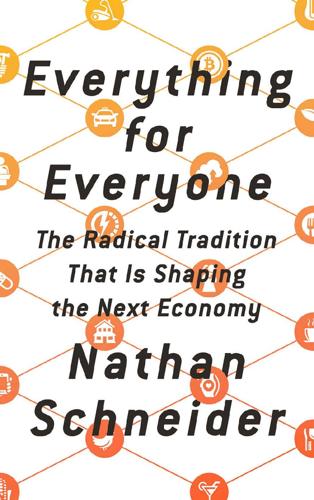
Everything for Everyone: The Radical Tradition That Is Shaping the Next Economy
by
Nathan Schneider
Published 10 Sep 2018
luncheon at Berkman Klein Center for Internet and Society at Harvard University (April 15, 2014), cyber.harvard.edu/events/luncheon/2014/04/difilippi; see also the widely circulated video “Vitalik Buterin Reveals Ethereum at Bitcoin Miami 2014,” youtube.com/watch?v=l9dpjN3Mwps; a compelling early analysis of Buterin’s worldview is Sam Frank, “Come With Us If You Want to Live,” Harper’s Magazine (January 2015); for a technical perspective, see Ethereum Foundation, “How to Build a Democracy on the Blockchain,” ethereum.org/dao. 9. Vitalik Buterin, comment on Reddit thread (April 6, 2014), reddit.com/r/ethereum/comments/22av9m/code_your_own_utopia. 10. Follow the ongoing contest of currencies at coinmarketcap.com; for CU Ledger, see culedger.com. 11.
…
Dietz was an old friend; I’d seen his brooding genius pass through phases as a theologian, a linguist, a coder, and a tea aficionado. D’Onofrio was new to me; he turned out to be a serial visionary, too, who at the time was in the cannabis-edibles business. His partner, pregnant, sat quietly nearby while we talked. Just a few weeks earlier, a nineteen-year-old Russian Canadian named Vitalik Buterin had published a proposal for what he called Ethereum.7 What Bitcoin was for money, Ethereum would be for everything else. It turns out that the basic idea of an ironclad list with no single caretaker—the blockchain—has an enormous range of potential applications. Rather than listing transactions, for instance, it can list contracts and enforce them computationally, resulting in an autonomous legal system without courts or cops.
…
The house itself had a name, the Love Nest, having become home to a shifting cast of residents who shared Joel’s interests in blockchains, art, and “exponential” relationships. Dietz wore a black T-shirt bearing the white circle that represented his current project, Swarm, a prototype for crypto-crowdfunding, still so new as to be of ambiguous legality; it would later be resurrected as a “cooperative ownership platform for real assets.” Vitalik Buterin’s cousin Anastasia arrived late. The speaker that evening was Eric Smalls, a Stanford undergrad, on leave from school to work on his drone startup. He talked about Leland Stanford’s interest in co-ops and Dunbar’s Number and the burning of the Library of Alexandria as “a single point of failure.”
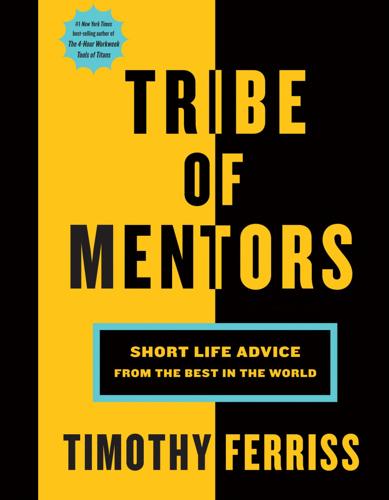
Tribe of Mentors: Short Life Advice From the Best in the World
by
Timothy Ferriss
Published 14 Jun 2017
And really, thank you so much for your interest. I’ll be kicking myself when the book comes out. –W “I’d rather give an understated good recommendation: be interdisciplinary . . . the interactions between [fields] tend to very often inform strategic and protocol decisions.” Vitalik Buterin TW: @VitalikButerin Reddit: /u/vbuterin VITALIK BUTERIN is the creator of Ethereum. He first discovered blockchain and cryptocurrency technologies through Bitcoin in 2011, and was immediately excited by the technology and its potential. He co-founded Bitcoin magazine in September 2011, and after two and a half years looking at what the existing blockchain technology and applications had to offer, wrote the Ethereum white paper in November 2013.
…
Quotes I’m Pondering (Tim Ferriss: Nov. 6–Dec. 4, 2015) Soman Chainani Dita Von Teese Jesse Williams Dustin Moskovitz Richa Chadha Quotes I’m Pondering (Tim Ferriss: Dec. 11, 2015–Jan. 1, 2016) Max Levchin Neil Strauss Veronica Belmont Patton Oswalt Lewis Cantley Quotes I’m Pondering (Tim Ferriss: Jan. 8–Jan. 29, 2016) Jerzy Gregorek Aniela Gregorek Amelia Boone Sir Joel Edward McHale, Lord of Winterfell Ben Stiller Quotes I’m Pondering (Tim Ferriss: March 11–March 25, 2016) Anna Holmes Andrew Ross Sorkin Joseph Gordon-Levitt How to Say No: Wendy MacNaughton Vitalik Buterin Quotes I’m Pondering (Tim Ferriss: Feb. 12–March 4, 2016) Rabbi Lord Jonathan Sacks Julia Galef Turia Pitt Annie Duke Jimmy Fallon Quotes I’m Pondering (Tim Ferriss: April 1–April 15, 2016) Esther Perel Maria Sharapova Adam Robinson Josh Waitzkin Ann Miura-Ko Jason Fried Quotes I’m Pondering (Tim Ferriss: April 22–May 13, 2016) Arianna Huffington Gary Vaynerchuk Tim O’Reilly Tom Peters Bear Grylls Brené Brown Quotes I’m Pondering (Tim Ferriss: May 27–June 16, 2016) Leo Babauta Mike D Esther Dyson Kevin Kelly Ashton Kutcher Quotes I’m Pondering (Tim Ferriss: June 24–July 15, 2016) Brandon Stanton Jérôme Jarre Fedor Holz Eric Ripert Sharon Salzberg Quotes I’m Pondering (Tim Ferriss: July 22–Aug. 12, 2016) Franklin Leonard Peter Guber Greg Norman Daniel Ek Strauss Zelnick Quotes I’m Pondering (Tim Ferriss: Aug. 12–Sept. 9, 2016) Steve Jurvetson Tony Hawk Liv Boeree Anníe Mist þórisdóttir Quotes I’m Pondering (Tim Ferriss: Sept. 16–Oct. 14, 2016) Mark Bell Ed Coan Ray Dalio Jacqueline Novogratz Brian Koppelman Stewart Brand Quotes I’m Pondering (Tim Ferriss: Oct. 21–Nov. 18, 2016) Sarah Elizabeth Lewis Gabor Maté Steve Case Linda Rottenberg Tommy Vietor Quotes I’m Pondering (Tim Ferriss: Nov. 25–Dec. 30, 2016) Larry King Muna AbuSulayman Sam Harris Maurice Ashley How to Say No: Danny Meyer John Arnold Quotes I’m Pondering (Tim Ferriss: Jan. 6–Jan. 27, 2017) Mr.
…
Samin Nosrat, 1; Steven Pressfield, 7; Debbie Millman, 25; Matt Ridley, 36; Tim Urban, 42; Graham Duncan, 59; Soman Chainani, 72; Dita Von Teese, 77; Dustin Moscovitz, 83; Richa Chadha, 86; Neil Strauss, 97; Veronica Belmont, 101; Patton Oswalt, 105; Jerzy Gregorek, 114; Aniela Gregorek, 124; Amelia Boone, 128; Joel McHale, 133; Ben Stiller, 137; Andrew Ross Sorkin, 145; Vitalik Buterin, 154; Rabbi Lord Jonathan Sacks, 158; Turia Pitt, 168; Adam Robinson, 190; Josh Waitzkin, 196; Arianna Huffington, 213; Gary Vaynerchuk, 215; Tom Peters, 227; Brené Brown, 233; Leo Babauta, 236; Kevin Kelly, 248; Jérôme Jarre, 258; Fedor Holz, 266; Eric Ripert, 269; Liv Boeree, 301; Anníe Mist Þórisdóttir, 306; Mark Bell, 311; Ed Coan, 319; Ray Dalio, 322; Brian Koppelman, 330; Sarah Elizabeth Lewis, 337; Gabor Maté, 341; Sam Harris, 366; David Lynch, 380; Nick Szabo, 383; Jon Call, 386; Dara Torres, 391; Dan Gable, 393; Darren Aronofsky, 399; Neil Gaiman, 411; Michael Gervais, 413; Mathew Fraser, 426; Laura Walker, 438; Marc Benioff, 447; Steven Pinker, 476; Whitney Cummings, 483; Rick Rubin, 488; Ben Silbermann, 498; Vlad Zamfir, 504; Stephanie McMahon, 509; Steve Aoki, 520; Jim Loehr, 527; Kristen Ulmer, 547 How has a failure, or apparent failure, set you up for later success?

Stake Hodler Capitalism: Blockchain and DeFi
by
Amr Hazem Wahba Metwaly
Published 21 Mar 2021
This can affect the need for working capital and streamline financial transactions for the two transacting parties. Once enforced, smart contracts can be encoded to disable access to an internet-based asset if payment is not received. For instance, accessing specific content may be automatically withdrawn if no payment is made. According to Vitalik Buterin, a 27-year-old programmer of Ethereum, he explained the smart contract in this way. In a smart contract system, an asset or a currency is transferred into a program which then executes this code, and at some point, it automatically validates a condition and determines if the asset should go to person X or back to person Y, or if it should be instantly reimbursed to the person who sent it or some mixture of both.
…
A frontal launch is a special form of public block attack where participants (usually miners) proceed with their transactions (e.g., play with transaction fees) when they see an impending transaction, making the initial transaction less profitable. Ideas for improving the tensile strength of permanent AMM products were first discussed in a post by Vitalik Buterin. One possible solution is to allow transactions that do not complete immediately but last for some time (e.g., 5 minutes), in which case the liquidity is gradually transferred to the pool without the highest price. This eliminates the problem of continuing travel because frontline workers cannot benefit from long work.
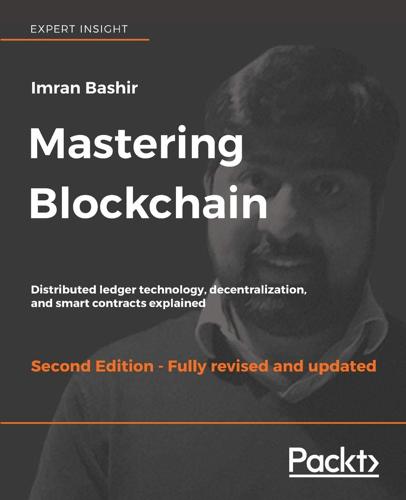
Mastering Blockchain, Second Edition
by
Imran Bashir
Published 28 Mar 2018
This is in stark contrast to the limited scripting language in Bitcoin and many other cryptocurrencies. With the availability of its Turing-complete language called Solidity, endless possibilities have opened for the development of decentralized applications. This blockchain was first proposed in 2013 by Vitalik Buterin, and it provides a public blockchain to develop smart contracts and decentralized applications. Currency tokens on Ethereum are called Ethers. MaidSafe MaidSafe provides a Secure Access For Everyone (SAFE) network that is made up of unused computing resources, such as storage, processing power, and the data connections of its users.
…
We will also cover both a practical and in-depth introduction to wallet software, mining, and setting up Ethereum nodes. Material on various challenges, such as security and scalability faced by Ethereum, will also be introduced. Additionally, trading and market dynamics will be discussed. Introduction Vitalik Buterin (https://vitalik.ca) conceptualized Ethereum in November, 2013. The critical idea proposed was the development of a Turing-complete language that allows the development of arbitrary programs (smart contracts) for blockchain and decentralized applications. This concept is in contrast to Bitcoin, where the scripting language is limited in nature and allows necessary operations only.
…
This block-generation cycle is initiated by a leader block. The only requirement is to sign the microblocks with the elected leader's private key. The microblocks can be generated at a very high speed by the elected leader (miner), thus resulting in increased performance and transaction speed. On the other hand, an Ethereum mauve paper written by Vitalik Buterin has been presented at Ethereum Devcon2 in Shanghai; it describes the vision of a scalable Ethereum. The mauve proposal is based on a combination of sharding and implementation of PoS algorithm. Certain goals such as efficiency gain via PoS, maximally fast block time, economic finality, scalability, cross-shard communication, and censorship resistance have been identified in the paper.

Radical Technologies: The Design of Everyday Life
by
Adam Greenfield
Published 29 May 2017
How did we get from Bitcoin to a “programmable trust infrastructure”? How might such a thing be useful? Who devised these tools, and why? It sometimes seems that every age gets the technological icons it deserves, and if so it would be hard to invent a character more pungently appropriate to our own than Vitalik Buterin. Though an identifiable, individual, flesh-and-blood human being, Buterin is in every other way almost as much of a cipher as the mysterious Satoshi Nakamoto. We know a few biographical facts; we know too that he is evidently a fierce believer in the decentralization of power. But otherwise he is a blank.
…
Similar ideas had cropped up across the broader community working on second-generation blockchain technology, and circulated under a variety of names—autonomous corporations, decentralized autonomous ventures, and the like. Perhaps with an eye toward a future in which such ideas might find more general application, though, it was the ubiquitous Vitalik Buterin who called it by the name which appears to have stuck: distributed autonomous organization. As Buterin saw matters, any group of people consists of a set of decisions: decisions about who is a member of the group, and who is not; decisions about how to allocate resources; decisions about what courses of action the group wishes to commit itself to.
…
Adrian Bowyer explicitly devised his self-replicating digital fabricator to undermine the logic of material scarcity on which capitalist enterprise depends, and this argument has been picked up and extended in recent years by authors like Rifkin, Mason, Srnicek and Williams, in their reflections on the shape of an emergent post-capitalist order. From the shadowy Satoshi Nakamoto to Nick Szabo to Vitalik Buterin, the inventors of the blockchain overtly intended to erode statism and central administration. Virtually everywhere, decision algorithms are touted to us on the promise that they will permanently displace human subjectivity and bias. And yet in every instance we find that these ambitions are flouted, as the technologies that were supposed to enact them are captured and recuperated by existing concentrations of power.

More Everything Forever: AI Overlords, Space Empires, and Silicon Valley's Crusade to Control the Fate of Humanity
by
Adam Becker
Published 14 Jun 2025
Stewart, Matthew Goldstein, and Jessica Silver-Greenberg, “Jeffrey Epstein Hoped to Seed Human Race with His DNA,” New York Times, July 31, 2019, www.nytimes.com/2019/07/31/business/jeffrey-epstein-eugenics.html. 170 Peter Aldhous, “Jeffrey Epstein’s Links to Scientists Are Even More Extensive Than We Thought,” BuzzFeed News, August 26, 2019, www.buzzfeednews.com/article/peteraldhous/jeffrey-epstein-science-donations-apologies-statements. 171 “A Timeline of the Jeffrey Epstein, Ghislaine Maxwell Scandal,” AP, June 28, 2022, https://apnews.com/article/epstein-maxwell-timeline-b9f15710fabb72e8581c71e94acf513e. 172 “Wynne,” “An Open Letter to Vitalik Buterin,” Medium, June 14, 2021, https://fredwynne.medium.com/an-open-letter-to-vitalik-buterin-ce4681a7dbe; Ellen Huet, “The Real-Life Consequences of Silicon Valley’s AI Obsession,” Bloomberg, March 7, 2023, www.bloomberg.com/news/features/2023-03-07/effective-altruism-s-problems-go-beyond-sam-bankman-fried; Charlotte Alter, “Effective Altruism Promises to Do Good Better.
…
The Future of Life Institute (FLI) is a nonprofit with ties to the EA community that is focused specifically on avoiding such “extreme large-scale risks” from technology.33 FLI also has strong ties to the tech industry. It was cofounded by Jaan Tallinn, an Estonian tech billionaire who helped develop Skype and Kazaa; Elon Musk has also donated $14 million to the nonprofit.34 But the overwhelming majority of FLI’s money comes from a single source: Vitalik Buterin, the cocreator of the cryptocurrency Ethereum, donated over $650 million (in the form of a different cryptocurrency called Shiba Inu) to FLI in 2021—instantly putting it on a similar financial footing to more well-known and influential think tanks like the Brookings Institution.35 EA and longtermism are quite compatible with other causes that have been loci of lavish tech industry interest and funding since well before MacAskill met Ord.
…
Since 2016, MIRI has received nearly $15 million from Open Philanthropy, the effective altruist philanthropic fund.70 Rationalists have deep connections to effective altruism: Bostrom and Siskind are central figures in both movements. The rationalist group houses of the Bay Area are often EA houses too. And the overlap in funding sources for the two groups isn’t limited to Open Philanthropy. MIRI has received over $5.4 million from Vitalik Buterin, the billionaire cryptocurrency mogul. Jaan Tallinn, the Skype billionaire, has donated more than $2.6 million.71 And Sam Bankman-Fried’s charitable foundation, FTX Future Fund, donated over $4 million to CFAR before FTX’s implosion in 2022.72 (As of this writing, there are ongoing court proceedings regarding the ultimate disposition of the latter funds.)
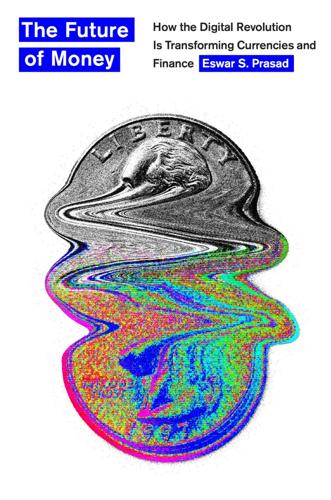
The Future of Money: How the Digital Revolution Is Transforming Currencies and Finance
by
Eswar S. Prasad
Published 27 Sep 2021
But the system is logically centralized—the entire network of nodes that make up such a system is linked and is in a commonly agreed-to state at all times. Bitcoin could be considered an early form of DeFi. The latest wave takes things to a more exalted level. Vitalik Buterin, cofounder of Ethereum DeFi relies on smart contract blockchains, of which Ethereum is by far the most widely used. The Bitcoin blockchain, as noted earlier, does not have smart contract capabilities. Vitalik Buterin, a wunderkind who is a cofounder of Ethereum (and is a college dropout, need you ask?), has argued that decentralization confers many advantages over traditional financial systems. One is fault tolerance—failure is less likely because such a system relies on many separate components.
…
Countries such as Iran, Russia, and Venezuela, which were smarting from US financial sanctions and faced massive budget deficits resulting from falling oil prices, viewed cryptocurrencies as a way to fix both problems. The Russian government was cracking down on cryptocurrencies but simultaneously saw the technology as offering a way around the sanctions. Apparently, this line of thinking picked up momentum after Russian president Vladimir Putin’s meeting with Vitalik Buterin, the Russian-Canadian cofounder of Ethereum, at the International Economic Forum in Saint Petersburg in June 2017. Some saw this as an implicit official endorsement of Ethereum. Buterin himself described the encounter as a one-minute meeting during which Putin did not say much. In October 2017, the Kremlin issued a set of orders regulating cryptocurrencies, applying securities laws to initial coin offerings (ICOs), and adapting new financial technology to create a “single payment space” within the Eurasian Economic Union, which features Armenia, Belarus, Kazakhstan, Kyrgyzstan, and Russia as members.
…
g=98b6eb5b-ca72-4863-bc62-631b1e39d6f9. Regulation Needs Overhaul and Updating SEC chairman Jay Clayton’s statement is available at https://www.sec.gov/news/public-statement/statement-clayton-2017-12-11. The Next Frontier: Decentralized Finance Buterin’s discussion of decentralization is at Vitalik Buterin, “The Meaning of Decentralization,” Medium, February 6, 2017, https://medium.com/@VitalikButerin/the-meaning-of-decentralization-a0c92b76a274. Flash (in the Pan?) Loans For information about Compound, see https://compound.finance/. The Compound white paper is available at “Compound: The Money Market Protocol,” February 2019, https://compound.finance/documents/Compound.Whitepaper.pdf.
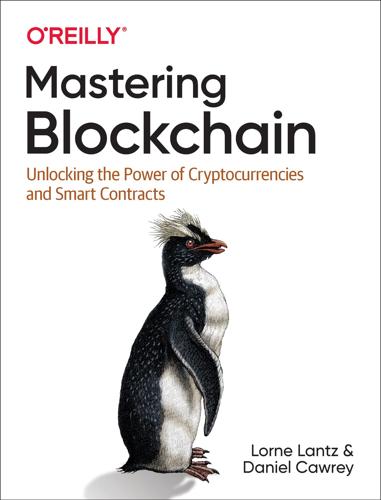
Mastering Blockchain: Unlocking the Power of Cryptocurrencies and Smart Contracts
by
Lorne Lantz
and
Daniel Cawrey
Published 8 Dec 2020
Ethereum: Taking Mastercoin to the Next Level Ethereum represents an evolution in the design of and thinking about cryptocurrency networks. It’s a more functional and general computation protocol that draws upon concepts from Bitcoin and Mastercoin, among other projects. The Ethereum concept was first proposed by Vitalik Buterin in 2013. After lobbying the Mastercoin Foundation to make changes to its protocol and add more functionality, and noting their reluctance to do so, Buterin began working with Gavin Wood and subsequently other founders to create the Ethereum protocol. The aim of Ethereum was to take Mastercoin to the next level—that is, to create a decentralized, open computer system secured with consensus.
…
Willett eventually realized that community backing in the form of investment via bitcoin might help foster adoption. So, he held the first “token sale,” or ICO, in 2013. This enabled Mastercoin to raise 3,700 BTC, or about $2.3 million at the time. Ethereum As described in the previous chapter, the beginnings of Ethereum trace back to November 2013, when Vitalik Buterin began emailing around a whitepaper proposing a new protocol based on elements of Bitcoin, Mastercoin, and other projects. This document was disseminated throughout the cryptocurrency community, and developers and backers began to accumulate. Buterin made a public announcement of the Ethereum project in February 2014.

Cloudmoney: Cash, Cards, Crypto, and the War for Our Wallets
by
Brett Scott
Published 4 Jul 2022
This is a more sophisticated process, because – upon activation – many of those digital machines are required to do acts of computation. They are like small programmes waiting to be activated on the network. The Ethereum team – which was led from the start by an otherworldly Russian-Canadian programmer called Vitalik Buterin – originally raised substantial funds by ‘pre-selling’ these ether tokens – like selling theme park tokens for an unbuilt theme park – and used the proceeds to hire people to build the base infrastructure, which they launched in 2015. The new system was like a blank slate upon which people could project their visions of a future alternative cyber-economy.
…
It was designed to gather ether tokens from investors, pool them together and grant the contributors voting rights to determine which entrepreneurs should be funded (almost like a decentralised mutual fund). It was a confusing title, because DAO is a broad concept in crypto circles, and calling an initiative ‘The DAO’ is like an investment fund calling itself The Company (rather than, say, BlackRock). Nevertheless, the founders enlisted Vitalik Buterin and other leading lights in the Ethereum community to join their board. The hype worked and the entity gathered ether tokens worth over $100 million from over 10,000 contributors in just fifteen days. The architects of The DAO did not hold back on hubris, claiming that their creation existed ‘simultaneously nowhere and everywhere’ and that it operated ‘solely with the steadfast iron will of unstoppable code’.

The Sharing Economy: The End of Employment and the Rise of Crowd-Based Capitalism
by
Arun Sundararajan
Published 12 May 2016
(The project leaders also sold some zooz to raise money.) Once the level of adoption in any neighborhood is sufficiently high, the ridesharing portion of the app gets activated. You can then use your accumulated zooz to buy rides, much like you’d use currency to buy an Uber or Lyft ride. As Vitalik Buterin, an influential writer about decentralized peer-to-peer systems and the founder of Ethereum, a decentralized platform that runs smart contracts, noted in a blog post, “the idea of releasing a new currency as a mechanism for funding protocol development is perhaps one of the most interesting economic innovations to come out of the cryptocurrency space.”14 But a critical determinant of success is architecting this distribution of value right.15 It also seems important for the manifestation of this value, the “coin,” to be of continuing value as the platform grows and matures.
…
Melanie Swan, Blockchain: Blueprint for a New Economy (Sebastopol, CA: O’Reilly Media, Inc., 2015). 12. Primavera De Fillipi, “Ethereum: Freenet or Skynet?,” Talk presented at the Berkman Center for Internet & Society, Harvard University, Cambridge, MA, April 15, 2014. 13. Lawrence Lessig, Code and Other Laws of Cyberspace (New York: Basic Books, 1999). 14. Vitalik Buterin, “Decentralized Protocol Monetization and Forks,” Ethereum Blog, April 30, 2014. https://blog.ethereum.org/2014/04/30/decentralized-protocol-monetization-and-forks. 15. It is likely that architecting it “optimally” is impossible, based on a set of results from a branch of economics called mechanism design. 16.
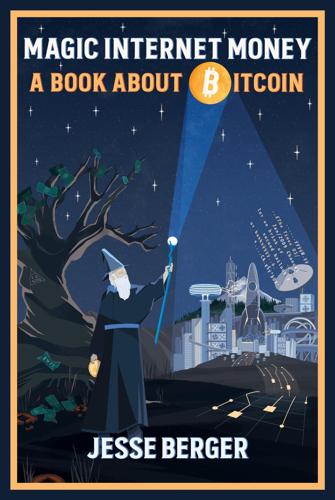
Magic Internet Money: A Book About Bitcoin
by
Jesse Berger
Published 14 Sep 2020
Chapter 8: Competition 15Litecoin (LTC) was released via open-source on GitHub on October 7, 2011, by Charlie Lee, a Google employee and former Engineering Director at Coinbase. The Litecoin network went live on October 13, 2011. 16Zcash (ZEC) was developed by Electric Coin Company (zcashd) and Zcash Foundation (zebra) on open source. It was initially released on October 28, 2016. 17Ethereum (ETH, also known as Ether) was proposed in late 2013 by Vitalik Buterin, a cryptocurrency researcher and programmer. With its original release on July 30, 2015, Ethereum has an unusually long list of founders. 18Named after American cartoonist Rube Goldberg, this is a machine intentionally designed to perform a simple task in an indirect and overly complicated way. 19Amanda Russo, “Central Banks ‘Waking Up’ to Digital Currency, Create New Framework for CBDC Deployment with World Economic Forum” World Economic Forum (January 22, 2020). 20Nathaniel Popper and Mike Isaac, “Facebook and Telegram Are Hoping to Succeed Where Bitcoin Failed” The New York Times (February 28, 2019). 21Alun John, “China’s digital currency will kick off ‘horse race’: central bank official” Reuters (November 6, 2019).

Digital Gold: Bitcoin and the Inside Story of the Misfits and Millionaires Trying to Reinvent Money
by
Nathaniel Popper
Published 18 May 2015
CHAPTER 20 199Martti Malmi posted an entry on his company’s website: Martti Malmi, “SC5’er Intro: The Bitcoin Guy,” SC5 website, February 5, 2013, http://sc5.io/posts/sc5er-intro-the-bitcoin-guy. 205“As a VC, my interest in the Bitcoin ecosystem is not ideological”: Jeremy Liew, “Why VCs Love the Bitcoin Market,” TechCrunch, April 5, 2013, http://techcrunch.com/2013/04/05/why-do-vcs-care-about-bitcoin/. 206The BitInstant engineers congregated with their laptops: The scene in the office was captured in unreleased footage from Nicholas Mross’s documentary The Rise and Rise of Bitcoin (2014), shared with the author. 207Mark Karpeles assured his users that the problems were due to the volume of trade: Vitalik Buterin, “The Bitcoin Crash: An Examination,” Bitcoin Magazine, April 13, 2013, https://bitcoinmagazine.com/4113/the-bitcoin-crash-an-examination/. CHAPTER 21 211“For the time being, Bitcoin is in many ways”: Felix Salmon, “The Bitcoin Bubble and the Future of Currency,” News Genius, http://genius.com/Felix-salmon-the-bitcoin-bubble-and-the-future-of-currency-annotated. 211finally went public in the New York Times: Nathaniel Popper and Peter Lattman, “Never Mind Facebook; Winklevoss Twins Rule in Digital Money,” New York Times, April 11, 2013, http://dealbook .nytimes.com/2013/04/11/as-big-investors-emerge-bitcoin-gets-ready-for-its-close-up/?
…
CHAPTER 25 257China’s previous experience with a successful virtual currency: Mark Lee, “China Bans Online Virtual Money Dealing for Minors,” Bloomberg, June 22, 2010, http://www.bloomberg.com/news/articles/2010-06-22/tencent-shares-fall-after-china-announces-virtual-currency-ban-for-minors. 259The reporter for Channel 2 tracked: The May 3, 2013, segment is available at http://jingji.cntv.cn/2013/05/03/VIDE1367596319388137.shtml. 260Macao, seven times bigger, in revenue terms, than Las Vegas: Charles Riley, “Macau’s Gambling Industry Dwarfs Vegas,” CNNMoney, January 6, 2014, http://money.cnn.com/2014/01/06/news/macau-casino-gambling/index.html. 261a division of Baidu, the search engine giant and the fifth-most-visited website in the world, announced: Vitalik Buterin, “Baidu Jiasule and the Chinese Bitcoin Community,” Bitcoin Magazine, October 16, 2013, https://bitcoinmagazine.com/7492/baidu-jiasule-and-the-chinese-bitcoin-community/. 262John Donahoe, said in an interview: Andrea Felsted, “Ebay to Expand the Range of Digital Currencies It Accepts,” Financial Times, November 3, 2013.

The Blockchain Alternative: Rethinking Macroeconomic Policy and Economic Theory
by
Kariappa Bheemaiah
Published 26 Feb 2017
These include Lord Adair Turner, W. Brain Arthur, Doyne Farmer, Andreas Antonopoulos, Satyajit Das, Joyce Appleby, Yanis Varoufakis, Patrick O’Sullivan, Nigel Allington, Mark Esposito, Sitabhra Sinha, Thomas Sowell, Niall Ferguson, Andy Stern, Alan Kirman, Neel Kashkari, Danny Dorling, David Graeber, Amir Sufi, Atif Mian, Vitalik Buterin, Andy Haldane, Gillian Tett, Martin Sandbu, Robert Reich, Kenneth Rogoff, Paul Beaudry, Michael Kumhof, Diane Coyle, Ben Dyson, Dirk Helbing, Guy Michaels, David Autor, Richard Gendal Brown, Tim Swanson, David Andolfatto, Paul Pfleiderer, Zoltan Pozsar, Frank Levy, Richard Murnane, César Hidalgo, and Robin Hanson, among others.
…
Press this button on the screen and you are taken to a website or you can call an Uber to come pick you up where you stand. Apps use the information that is being exchanged on the protocol on which they run to perform these activities and deliver these outputs. A smart contract , according to Ethereum’s founder, Vitalik Buterin, “is a computer program that directly controls some digital asset.” Smart Contracts are essentially the same as Apps, except they perform a different kind of automation. While the traditional Apps available on a Google Play Store or Apple App Store are useful for certain operations, Smart Contracts function as Apps that perform value exchange operations when they receive a certain input.

The Metaverse: And How It Will Revolutionize Everything
by
Matthew Ball
Published 18 Jul 2022
This differs from the traditional financial services industry, which is controlled by a handful of decades-old giants with few competitors and no incentive to cut rates. The only competitive force on PayPal’s fees, for example, are those charged by Venmo or Square’s Cash App. For Bitcoin, fees are pushed down by anyone who chooses to compete for a transaction fee. Not long after Bitcoin emerged (its creator remains anonymous), two early users, Vitalik Buterin and Gavin Wood, began developing a new blockchain, Ethereum, which they described as a “decentralised mining network and software development platform rolled into one.”1 Like Bitcoin, Ethereum pays those operating its network through its own cryptocurrency, Ether. However, Buterin and Wood also established a programming language (Solidity) that enabled developers to build their own permissionless and trustless applications (called “dapps,” for decentralized apps), which could also issue their own cryptocurrency-like tokens to contributors.
…
In late 2021, some 5,000 outdoor enthusiasts used a DAO to purchase a 40-acre plot of land near Yellowstone National Park in Wyoming, which had passed legislation recognizing the legitimacy of DAOs earlier in the year. “CityDAO” is mostly organized through Discord and has no official leader (Ethereum co-founder Vitalik Buterin is a member), with all major decisions made through vote and members able to sell their membership tokens at any time. One member, CityDAO’s de facto figurehead, told Financial Times that he hoped Wyoming’s embrace of the DAO structure would “become this fundamental link between digital assets, crypto and the physical world.”12 As a point of reference, Wyoming was also the first state to authorize the creation of LLCs, having passed related legislation in 1977, some 19 years before it was available nationwide.

Blockchain: Blueprint for a New Economy
by
Melanie Swan
Published 22 Jan 2014
As with random-sampling elections, blockchain technology could more efficiently implement the futarchy concept in an extremely large-scale manner (decentralized, trusted, recorded, pseudonymous). The futarchy concept is described in shorthand as “vote for values, bet on beliefs,” an idea initially proposed by economist Robin Hanson,122 and expounded in the blockchain context by Ethereum project founder Vitalik Buterin.123 This is a quintessential example of the potential transformative power of blockchain technology. There is the possibility that voting and preference-specification models (like futarchy’s two-tiered voting structure using blockchain technology) could became a common, widespread norm and feature or mechanism for all complex multiparty human decision making.
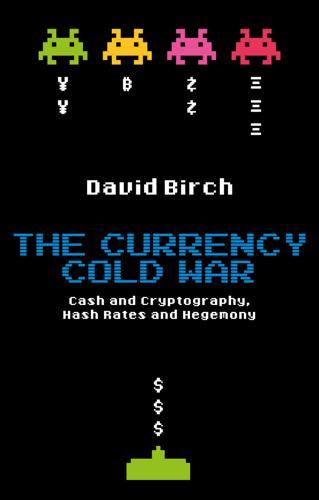
The Currency Cold War: Cash and Cryptography, Hash Rates and Hegemony
by
David G. W. Birch
Published 14 Apr 2020
ERC-20 defined a way of creating a standard form of token using ‘smart contracts’ on the Ethereum blockchain. Please note, once again, that smart contracts are not contracts at all because there is no possibility of uncertainty in their execution, and thus no compliance; strictly speaking, they are just automaticity created by the consensus-forming process. The inventor of Ethereum, Vitalik Buterin, says as much: ‘I now regret calling the objects in Ethereum “contracts” as you’re meant to think of them as arbitrary programs and not smart contracts specifically’ (DuPont and Maurer 2015). He later said that ‘persistent scripts’ might have been a better name, and I agree. ERC-20 tokens are a kind of fungible value that are exchanged between these persistent scripts: a practical implementation of digital bearer claims on assets with no clearing or settlement involved in their exchange (and, hence, a more efficient marketplace for their trading).11 Picture this: I want to license some IBM software for IBM$100, so I tell my smart contract to send this value to an IBM smart contract.

Ours to Hack and to Own: The Rise of Platform Cooperativism, a New Vision for the Future of Work and a Fairer Internet
by
Trebor Scholz
and
Nathan Schneider
Published 14 Aug 2017
Put differently, cooperatives tended to focus too much on how the value would be shared rather than on a compelling offer to create the value in the first place. Perhaps part of the solution will come from the possibility, created by blockchain technologies, of “distributed collaborative organizations,” or DCOs—new decentralized collectives that, in the eyes of pioneers like Matan Field of Backfeed and Vitalik Buterin of Ethereum, can use rules embedded in computer code to align the incentives of different contributors, of financial capital, of expertise, of labor, and of participation. These DCOs are connected intellectually to a variety of related decentralized ownership models. They range from the FairShare Model of Karl Sjogren, which proposes a structure of different classes of ownership shares for different contributors—for founders, people with a continuous working role, for users, and for investors—to the Swarm approach to “crypto-equity” crowdfunding developed by Joel Dietz.
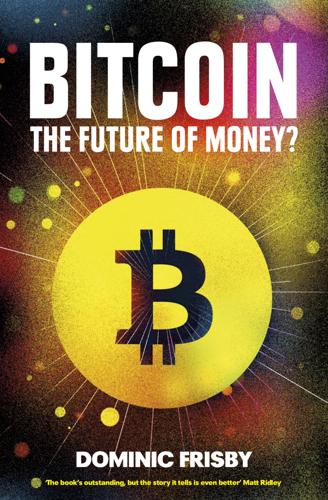
Bitcoin: The Future of Money?
by
Dominic Frisby
Published 1 Nov 2014
We want to let people choose and program whatever disintermediation they want.’ It’s revolutionary stuff. The implications to existing internet business models are substantial. What kind of progress has been made? ‘We came up with the idea back in November of last year, there was a white paper drafted by a gentleman named Vitalik Buterin, who is the co-founder of Bitcoin Magazine and a pretty big figure in the space. And since then we’ve released five proof of concepts and we’re just about ready to begin a sale to fund the project’s development. We anticipate releasing our block chain in the fourth quarter of this year. ‘It’s very complex.
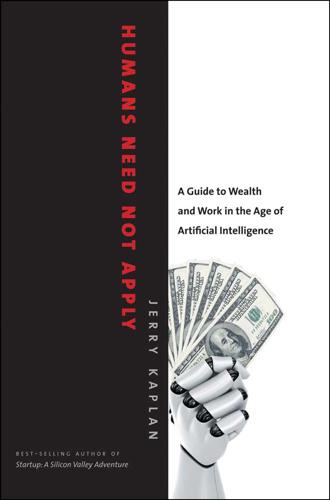
Humans Need Not Apply: A Guide to Wealth and Work in the Age of Artificial Intelligence
by
Jerry Kaplan
Published 3 Aug 2015
Paul Miller, “iOS 5 includes Siri ‘Intelligent Assistant’ Voice-Control, Dictation—for iPhone 4S Only,” The Verge, October 4, 2011, http://www.theverge.com/2011/10/04/ios-5-assistant-voice-control-ai-features/. 17. Loren Schweninger, Black Property Owners in the South, 1790–1915 (Champaign: University of Illinois Press, 1997), 65–66. 18. Vitalik Buterin, “Cryptographic Code Obfuscation: Decentralized Autonomous Organizations Are About to Take a Huge Leap Forward,” Bitcoin, February 8, 2014, http://bitcoinmagazine.com/10055/cryptographic-code-obfuscation-decentralized-autonomous-organizations-huge-leap-forward/. 19. For an excellent in-depth analysis of this problem, see Nick Bostrom, Superintelligence (Oxford: Oxford University Press, 2014). 20. http://en.wikipedia.org/wiki/Anti-lock_braking_system, last modified December 30, 2014.
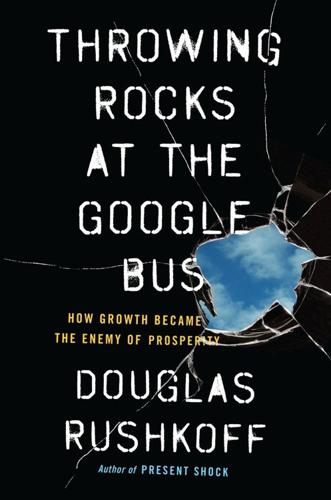
Throwing Rocks at the Google Bus: How Growth Became the Enemy of Prosperity
by
Douglas Rushkoff
Published 1 Mar 2016
Mark Gimein, “Virtual Bitcoin Mining Is a Real-World Environmental Disaster,” bloomberg.com, April 12, 2013. 39. Michael Carney, “Bitcoin Has a Dark Side: Its Carbon Footprint,” pando.com, December 16, 2013. 40. Lawler, “Bitcoin Miners Are Racking Up $150,000 a Day.” 41. Jon Evans, “Enter the Blockchain: How Bitcoin Can Turn the Cloud Inside Out,” techcrunch.com, March 22, 2014. 42. Vitalik Buterin, “DAOs, DACs, DAs and More: An Incomplete Terminology Guide,” blog.ethereum.org, May 6, 2014. 43. David Johnston, Sam Onat Yilmaz, Jeremy Kandah, Nikos Bentenitis, Farzad Hashemi, Ron Gross, Shawn Wilkinson, and Steven Mason, “The General Theory of Decentralized Applications, Dapps,” github.com, June 9, 2014. 44.

Supremacy: AI, ChatGPT, and the Race That Will Change the World
by
Parmy Olson
Groups that were focused on AI “safety” and the extinction threat got far more funding, often via billionaire benefactors. The Future of Life Institute, a Cambridge, Massachusetts–based nonprofit that studied how best to stop AI from getting access to weapons, got $25 million from crypto magnate Vitalik Buterin in 2021. That single grant was bigger than the combined annual budgets of all the AI ethics groups at the time. Open Philanthropy, the charitable vehicle of Facebook billionaire Dustin Moskovitz, has sprinkled a number of multimillion-dollar grants to AI safety work over the years, including a $5 million donation to the Center for AI Safety in 2022 and an $11 million donation to Berkeley’s Center for Human-Compatible AI.

Number Go Up: Inside Crypto's Wild Rise and Staggering Fall
by
Zeke Faux
Published 11 Sep 2023
GO TO NOTE REFERENCE IN TEXT “These guys, these rootless white males”: Joshua Green, Devil’s Bargain: Steve Bannon, Donald Trump, and the Nationalist Uprising (New York: Penguin, 2017), 146. GO TO NOTE REFERENCE IN TEXT Willett wrote in 2012: J. R. Willett, “The Second Bitcoin Whitepaper,” https://cryptochainuni.com/wp-content/uploads/Mastercoin-2nd-Bitcoin-Whitepaper.pdf. GO TO NOTE REFERENCE IN TEXT he raised about $500,000: Vitalik Buterin, “Mastercoin: A Second-Generation Protocol on the Bitcoin Blockchain,” Bitcoin Magazine, November 4, 2013. GO TO NOTE REFERENCE IN TEXT inventing pop-under internet ads: Zeke Faux, “Anyone Seen Tether’s Billions?,” Bloomberg Businessweek, October 7, 2021. GO TO NOTE REFERENCE IN TEXT They initially called the project Realcoin: Pete Rizzo, “Realcoin Rebrands as ‘Tether’ to Avoid Altcoin Association,” CoinDesk, November 20, 2014.

Machine, Platform, Crowd: Harnessing Our Digital Future
by
Andrew McAfee
and
Erik Brynjolfsson
Published 26 Jun 2017
The Nakamoto Institute’s withering assessment was that Ethereum was “doomed.” Its combination of poor programming and terms of use that essentially made this lousy programming legally binding spelled disaster. Believers in the dream of decentralizing all the things, however, weren’t yet ready to give up. In July of 2016, Vitalik Buterin, one of Ethereum’s cofounders and the author (at nineteen years old) of the influential 2013 “Ethereum White Paper,” announced a “hard fork” in the cryptocurrency and its blockchain. If a majority of participants in The DAO accepted this fork (which was embodied in a new version of the Ethereum software), all previous transactions that occurred within the decentralized autonomous organization would be essentially forgotten, and all involved ethers would be returned to their original owners.

The Contrarian: Peter Thiel and Silicon Valley's Pursuit of Power
by
Max Chafkin
Published 14 Sep 2021
At the end of 2019, the organization recruited a new CEO, James O’Neill, a longtime employee at Thiel’s companies (and one of Thiel’s suggestions to run the FDA). At the time of my visit, SENS had been enjoying some modest success, having spun out several research projects into early-stage companies and attracted a number of new donors, including Vitalik Buterin, the creator of the technology behind the Ethereum cryptocurrency and, years earlier, a Thiel Fellow. But Thiel himself had not been among those recent contributors. His last donation to SENS had been in 2016. De Grey also mentioned that, despite talking up SENS’s work often in the press, Thiel had never actually visited the nonprofit’s laboratory, which is located just eight miles from Palantir’s Palo Alto office.

The Quiet Coup: Neoliberalism and the Looting of America
by
Mehrsa Baradaran
Published 7 May 2024
The debate was in response to a tweet by Elon Musk, who now controls X (formerly Twitter), stating, “We should be much more worried about population collapse.” Sahil Lavingia, a venture capitalist and successful tech founder, quickly responded with a solution: “We should be investing in technology that makes having kids much faster/easier/cheaper/more accessible: Synthetic wombs, etc.” Vitalik Buterin, the founder of Ethereum, responded with an article with data revealing a likely cause of women having fewer babies, which is a vast disparity in pay between men and women who have children—a gap dubbed the “motherhood penalty.” Yet instead of proposing ideas for closing the pay gap or that the gap should be closed, Buterin agreed that technology was the answer: “Synthetic wombs would remove the high burden of pregnancy, significantly reducing the inequality.”